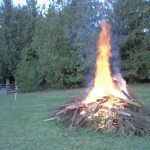Never gardened before? No problem. Make your grow-you-own dreams a reality with these easy-to-follow tips.
1. Start with great soil.
When starting a garden, one of the top pieces of advice is to invest in soil that is nutrient-rich and well-drained. Achieve this just-right blend by mixing 3 inches of Organic Enriched Garden Soil into the top 6 to 8 inches of existing soil if you’re planning to plant in the ground. Consider also adding any kind of organic fertilizer and be sure to mix it thoroughly into the soil.
2. Choose the right plants.
It’s important to select plants that match your growing conditions. This means putting sun-loving plants into a sunny spot, choosing heat-tolerant plants in warm climates, and giving ground-gobbling vines like pumpkins and melons ample elbow room (or a trellis to climb). Do your homework and pick varieties that will grow well where you live and in the space you have. And to get a step up on success when growing veggies and herbs, start with vigorous young plants from Bonnie Plants® instead of trying to grow from seed.
3. Discover your zone.
Knowing your “hardiness zone” can help you choose the best plants. Simply put, it describes the coldest place a plant can grow. The higher the zone number, the warmer the climate. So if a plant is “hardy to zone 4” and you garden in zone 5, that plant will survive in your yard. If, however, you’re in zone 3, it’s too cold to grow that particular plant. Find out your hardiness zone.
4. Learn your frost dates.
Planting too early (or late) in the season can spell disaster for your garden. You need to know the last average spring frost date for your area so you don’t accidentally kill plants by putting them out prematurely. It’s also good to know your first average fall frost date so that you get your plants harvested or moved indoors before late-season cold damages them. Discover the average first and last frost dates for your area.
5. Add some mulch.
Apply a layer of mulch that’s 2 to 3 inches deep around each plant. This will help reduce weeds by blocking out the sun, and reduce moisture loss through evaporation, so you have to water less. Or, you can put down straw, shredded leaves, pine straw, or some other locally available material.
All community gardeners are welcome to leave their tips and comments here.





